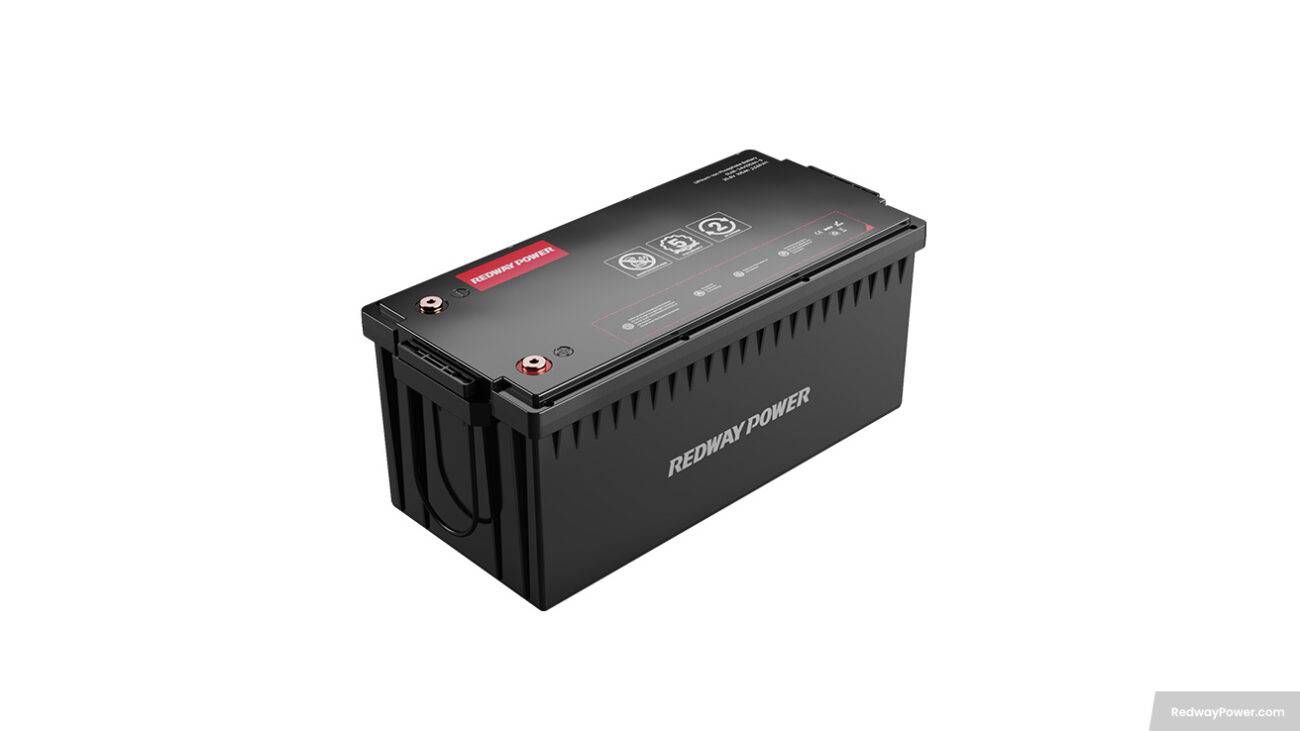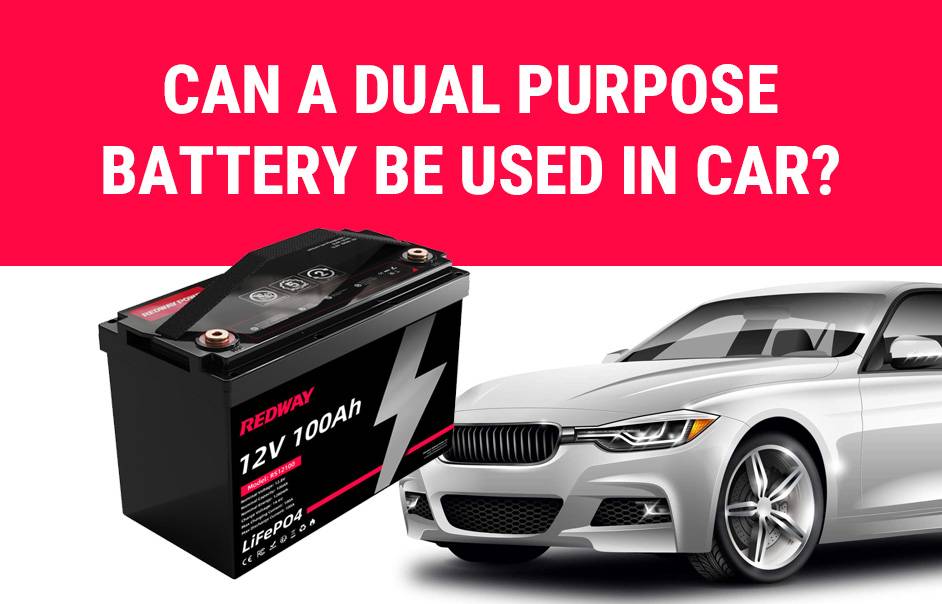Also check: LiFePO4 vs AGM Batteries
Understanding Dual Purpose Batteries
A. Definition and Function
Dual purpose batteries are a type of battery that is designed to serve two functions. They are engineered to provide both starting power and deep cycling capabilities. In other words, they can deliver the high burst of energy needed to start an engine, as well as provide a steady supply of power over a longer period.
The main function of dual purpose batteries is to offer reliable starting power for vehicles or equipment that require it. This means they have the ability to deliver a high amount of current in short bursts, which is crucial for starting engines. Whether you need to start your car, boat, or RV, a dual purpose battery will ensure that you have enough power to get going.
Additionally, these batteries are built with deep cycling capabilities. This means they can withstand repeated discharges and recharges without suffering significant damage or loss in performance. Deep cycling refers to discharging the battery at a slower rate over an extended period rather than delivering quick bursts of energy like during engine starts.
Dual purpose batteries offer the best of both worlds by providing reliable starting power while also being able to handle continuous use and deep discharges. Whether you need them for marine applications, recreational vehicles, golf carts, or other equipment where both cranking power and long-lasting performance are required; dual-purpose batteries are an excellent choice!
B. Common Applications
Common Applications of Dual Purpose Batteries
Dual purpose batteries are versatile and can be used in a variety of applications. Here, we will explore some common uses for these batteries.
1. Marine: Boating enthusiasts often rely on dual purpose batteries to power their boats. These batteries provide the necessary starting power for engines, as well as the deep cycling capability required to run onboard electronics and accessories.
2. Recreational Vehicles (RVs): Whether you’re cruising down the highway or camping off-grid, dual purpose batteries are perfect for powering your RV’s engine and electrical systems. They can handle the demands of both starting and providing continuous power during extended periods without shore charging.
3. Off-Road Vehicles: Dual purpose batteries are also popular among off-road enthusiasts who need reliable starting power for their vehicles while still being able to run additional equipment such as lights, winches, or sound systems.
4. Solar Energy Systems: As solar energy becomes more prevalent, dual purpose deep cycle batteries are an excellent choice for storing energy generated by solar panels. These batteries can efficiently store excess electricity during sunny days and provide a steady supply of power when sunlight is limited.
5. Emergency Backup Power: Dual-purpose batteries are ideal for backup power during emergencies or power outages at home or in commercial settings like hospitals or data centers where uninterrupted electricity is crucial.
Dual-purpose batteries have diverse applications ranging from marine vessels to recreational vehicles and even renewable energy systems! Their ability to perform both as a starter battery and a deep cycle battery makes them incredibly versatile options across various industries that require reliable portable power solutions
Understanding Deep Cycle Batteries
A. Definition and Function
Dual purpose batteries are a versatile type of battery that is designed to perform two functions: starting and deep cycling. This means they can provide the necessary power to start an engine, as well as provide a consistent flow of energy over an extended period of time.
In terms of function, dual purpose batteries differ from traditional starting batteries in that they are built to handle both high current loads for engine cranking and low current draws for accessories like lights or radios. They have thicker plates than starting batteries, which allows them to withstand the repeated cycling between charging and discharging without losing capacity.
These types of batteries are commonly used in recreational vehicles (RVs), boats, off-grid solar systems, and other applications where a combination of starting power and deep cycling capability is needed. They offer the convenience of having one battery that can perform multiple tasks effectively.
The key advantage of dual purpose batteries is their ability to deliver bursts of high energy when starting an engine while also being able to discharge slowly over a longer period. This makes them suitable for powering various onboard electronics or appliances in addition to providing reliable starting power.
Dual purpose batteries offer a practical solution for applications requiring both starting power and deep cycling capabilities. Their versatility makes them a popular choice among those who want the flexibility to meet different energy demands while ensuring reliable performance.
B. Common Applications
Common Applications
Dual purpose batteries are versatile power sources that can be used in a variety of applications. One common application is in marine vehicles, such as boats and yachts. These batteries are designed to provide reliable starting power for the engine, as well as sufficient deep cycling capabilities to run onboard electronics and accessories.
Another common use for dual purpose batteries is in recreational vehicles (RVs) and campers. These batteries can supply the necessary power for lighting, appliances, and other electrical equipment while on the road or at a campground.
In addition, dual purpose batteries are often utilized in off-grid solar systems. They can store excess energy generated by solar panels during the day and provide it when needed during periods of low sunlight or at night.
On the other hand, deep cycle batteries have their own set of applications. One primary use is in golf carts. Deep cycle batteries offer long-lasting power that allows golfers to traverse entire courses without worrying about running out of energy.
Deep cycle batteries also find their place in renewable energy systems like wind turbines or remote cabins where consistent electricity supply over extended periods is required.
Whether you need a battery for your boat, RV, off-grid system, golf cart or any other specific application depends on factors such as desired charging cycles, discharge rate requirements and overall lifespan expectations!
Key Differences between Dual Purpose and Deep Cycle Batteries
A. Charging Cycles
Charging cycles play a crucial role when it comes to understanding the difference between dual purpose and deep cycle batteries. So, let’s dive deeper into this aspect.
Dual purpose batteries are designed to provide power for both starting an engine and running electrical accessories. They have a higher cranking amp capacity compared to deep cycle batteries, allowing them to deliver the burst of energy needed to start your vehicle.
On the other hand, deep cycle batteries are built for long-lasting power delivery over extended periods. Unlike dual purpose batteries, they can withstand repeated discharge and recharge cycles without suffering significant damage or loss of performance.
When it comes to charging cycles, dual purpose batteries excel in quick charge acceptance. They have the ability to rapidly absorb energy during charging, making them ideal for vehicles that require frequent starts or high electrical demands.
Deep cycle batteries, on the other hand, are designed with slower charge acceptance but longer overall runtime. They can handle a slow and steady charging process without overheating or losing their effectiveness.
While dual purpose batteries excel in rapid charge acceptance for immediate power needs, deep cycle batteries prioritize endurance over quick recharging capabilities. Understanding these differences will help you choose the right battery type based on your specific requirements!
B. Discharge Rate
When it comes to the discharge rate, dual purpose and deep cycle batteries also differ in their performance. The discharge rate refers to how quickly a battery loses its charge when being used.
Dual purpose batteries are designed to provide bursts of high power for short durations. They have a higher discharge rate compared to deep cycle batteries. This makes them ideal for applications that require quick energy release, such as starting an engine or powering up electrical systems in vehicles.
On the other hand, deep cycle batteries have a lower discharge rate but can sustain power over extended periods of time. They are built to handle continuous, low-power discharges without significantly impacting their overall lifespan. This makes them suitable for long-duration applications like marine appliances or off-grid solar systems.
It’s important to consider your specific needs when choosing between these two types of batteries. If you require frequent bursts of high power, a dual purpose battery might be more appropriate. However, if you need sustained power over longer periods without compromising longevity, then a deep cycle battery is likely the better option.
Always keep in mind that using a battery outside its recommended discharge rate can lead to decreased performance and diminished lifespan. So make sure you understand your power requirements and choose accordingly!
C. Lifespan
One of the key differences between dual purpose and deep cycle batteries lies in their lifespan. While both types are designed to provide reliable power, they have different capabilities when it comes to longevity.
Dual purpose batteries typically have a shorter lifespan compared to deep cycle batteries. This is because they are built to handle the demands of starting an engine as well as providing power for other electrical components. The constant switching between these two functions can cause increased wear and tear on the battery over time.
On the other hand, deep cycle batteries are specifically designed for sustained power delivery over longer periods. They are built with thicker plates that can withstand repeated charging and discharging cycles without significant damage. This makes them more durable and able to last for several years with proper maintenance.
To ensure a longer lifespan for your dual purpose battery, regular maintenance is crucial. This includes keeping it clean, checking the fluid levels if applicable, and monitoring its charge level regularly. Proper care will help extend its life and ensure optimal performance.
When choosing between dual purpose and deep cycle batteries, consider your specific needs in terms of functionality and expected usage patterns. If you require a battery that can handle frequent starts while also providing auxiliary power, a dual-purpose battery may be suitable despite its shorter lifespan expectancy. However, if you prioritize long-term reliability and extended cycling capabilities, investing in a deep cycle battery would be more beneficial.
Remember that longevity should not be the sole determining factor when selecting a battery; factors such as capacity requirements, discharge rate tolerance, cost-effectiveness should also be taken into consideration








